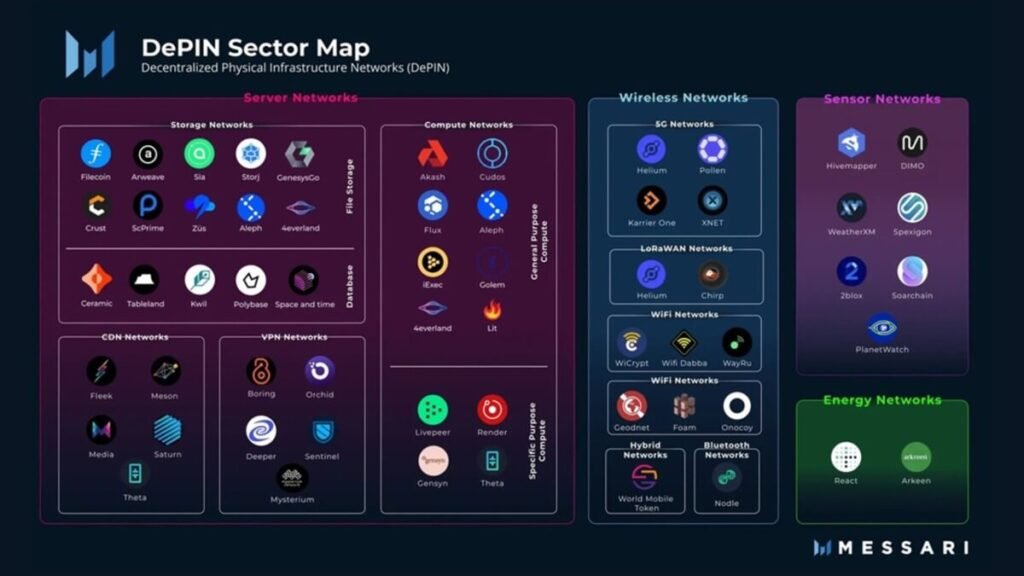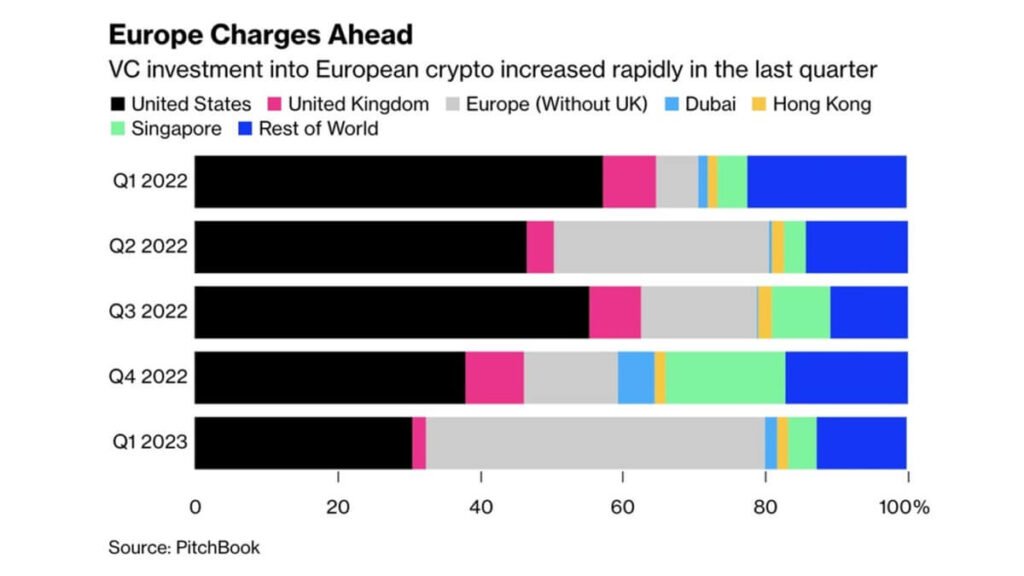Recently, I had a great conversation with a high-ranking member of the top management team from a well-known exchange about the next bull run. This person expressed doubt and uncertainty about it, questioning if there was a compelling reason to be optimistic. He pointed out that the crypto industry seemed to have exhausted its use cases, with an abundance of generic decentralized exchanges, yield farming projects, NFT projects, and, even worse, meme coins. He also mentioned the increasing regulatory scrutiny and a possible recession on the horizon as major factors that could prevent the next bull market from materializing.
As someone who has been involved in the crypto industry for several years, I’m used to encountering skeptics. People who are unfamiliar with the industry often repeat arguments they’ve heard in the media, like concerns about the environmental impact of cryptocurrencies or their use in illegal activities. However, it was the first time I heard such pessimism from an insider. It was refreshing because it led to a genuine discussion with a well-informed devil’s advocate who sees both the potential and the pitfalls.
My argument was that things actually look quite promising at the moment. Let me share with you some of the points I discussed with this executive.
New narratives
As a marketer and retail trader, I’m constantly searching for the next significant trend. One area that particularly excites me is Decentralized Physical Infrastructure (DePIN). This innovative concept comprises four distinct types of DePIN networks (see figure 1), each offering its own unique potential and benefits. Among these, I believe decentralized storage networks stand out as an exceptionally promising use case.

Decentralized storage networks have captured my attention due to their numerous advantages. They provide a secure, reliable, and cost-competitive solution for storing data in a decentralized manner. By leveraging blockchain technology, these networks distribute data across a network of nodes, ensuring redundancy, fault tolerance, and data integrity. With centralized storage systems prone to vulnerabilities and single points of failure, decentralized storage networks offer enhanced security and resilience.
Furthermore, decentralized storage networks empower individuals and organizations by giving them full control over their data. Users can encrypt their data and retain ownership, mitigating concerns about unauthorized access or data manipulation. Additionally, these networks often utilize token economics, incentivizing participants to contribute their storage resources and maintain the network’s functionality. Decentralized storage may even become a necessity as more nations grow cautious about hosting energy-intensive data centers.
Another area within DePIN that I am bullish on is the development of decentralized energy networks. These networks bring together distributed energy sources to create a more resilient and efficient energy grid. This aligns perfectly with the global energy transition goals and presents a significant opportunity for innovation and growth. These are just 2 kinds of DePIN networks, and there are many other novel ways in which blockchain technology can provide tangible benefits across different industries. My key point is that the blockchain industry is continuously evolving and innovating, promising even greater advancements and a faster rate of adoption in the future. But I also believe more regulatory clarity is necessary for new big players to join the industry. To that extent, let’s discuss the current regulatory landscape.
Regulatory Landscape: threats and opportunities
The regulatory landscape for cryptocurrencies has indeed presented significant challenges in recent times. Who doesn’t remember the China ban and FUD in 2021? The SEC’s increased scrutiny on the crypto industry in the past few months has created similar concerns. I’ll also admit that participation of both the Chinese and American markets is crucial for the success of future bull runs. However, it is important to consider a broader perspective to assess the overall situation.
While it may seem that the regulatory environment is entirely negative, there are indications that newly introduced regulations are also intended to foster the crypto industry. One notable example is the Markets in Crypto Assets (MiCA) regulation recently enacted by the European Union, which represents a significant milestone in the industry. This regulatory clarity has attracted the attention of venture capitalists, already leading to an increased interest in the EU market (figure 2).

Why is that? It’s because the introduction of such regulations can bring stability and legitimacy to the crypto market, providing clearer guidelines for businesses and investors.
Regulatory frameworks can also help protect investors, thereby encouraging institutional investors to enter the market, bringing in additional capital and expertise. This influx of institutional participation can contribute to the growth and maturation of the crypto industry. Although I also believe it may stiffen innovation in the short-term, the long-term effect will most definitely be positive.
China is also reevaluating its stance on cryptocurrencies, particularly in Hong Kong, where there is increased flexibility to foster a crypto hub. The economy is not doing too well, and much talent and capital have left, tarnishing the reputation of the global financial hub. Although a lot of damage has already been done, chances are, with its established financial infrastructure and history as a global financial hub, Hong Kong has the potential to reinstate itself as a leading center for cryptocurrencies.
The USA, also, is not, by definition, anti-crypto, despite the anti-crypto rhetoric from the SEC and the White House. There is a growing voice advocating for embracing cryptocurrencies, and for good reason. The US currently leads the crypto landscape in various metrics, such as cumulative market cap and the number of crypto projects (figures 3 and 4). Many stakeholders want to maintain this position. It is likely that regulatory uncertainty and hostility will gradually be replaced by acceptance and embrace. This shift will bring about regulatory clarity, which, in turn, will attract institutional investors, injecting more capital into the crypto market, as has already been demonstrated by MiCa in the EU.
| Rank | Country | Cum. Market Cap | Percentage |
| 1 | United States | $ 117,321,596,482 | 30% |
| 2 | Hong Kong | $ 92,346,503,867 | 24% |
| 3 | Cayman Islands | $ 63,162,799,772 | 16% |
| 4 | Switzerland | $ 29,344,472,990 | 8% |
| 5 | Singapore | $ 27,017,945,593 | 7% |
| 6 | Sweden | $ 10,414,922,940 | 3% |
| 7 | United Kingdom | $ 8,504,714,815 | 2% |
| 8 | India | $ 8,215,872,000 | 2% |
| 9 | Australia | $ 6,036,758,932 | 2% |
| 10 | China | $ 4,544,219,668 | 1% |
| Rest of world | $ 22,784,642,372 | 6% | |
| Total | $ 389,694,449,431 | 100% |
| Rank | Country | Number of projects | Percentage |
| 1 | United States | 217 | 23% |
| 2 | Singapore | 131 | 14% |
| 3 | United Kingdom | 78 | 8% |
| 4 | Switzerland | 66 | 7% |
| 5 | Hong Kong | 32 | 3% |
| 6 | Canada | 25 | 3% |
| 7 | China | 24 | 3% |
| 8 | Australia | 22 | 2% |
| 9 | Germany | 20 | 2% |
| 10 | Estonia | 20 | 2% |
| Rest of world | 291 | 31% | |
| Total | 926 | 100% |
I still remember all the hope and optimism that prevailed in the past few years. It was always about institutional money entering the crypto space. I didn’t see it. However, I can now see that institutional money is indeed showing interest in entering the crypto space. This is evident from the growing number of companies, such as Blackrock, expressing their desire to launch Bitcoin exchange-traded funds (ETFs). Lo and behold, traditional outlets like Forbes instantly change their tune about Bitcoin’s energy consumption and usage by illicit actors. The world can be very flexible indeed when there is money to be made. During the next bull run, institutional money will play a significant role, which may even become a narrative to kickstart it. In sum, while regulations may change the crypto landscape, it will also bring opportunities.
Macro economic challenges
Let’s address the concerns regarding a possible recession in most major markets. It is widely acknowledged that economists often struggle to accurately predict recessions. They tend to either predict them far more frequently than they occur or severely underestimate their impact. Currently, most experts still anticipate a soft landing in the US, although the Eurozone has already entered a (technical) recession . However, let’s imagine a scenario where all major markets do experience a recession. What would happen then? Recessions are typically temporary in nature and eventually come to an end. In the worst-case scenario, a recession may potentially delay the next bull run. That’s at least the way I see it.
Better yet, it is worth considering how a recession could potentially have a positive impact on the crypto market in the mid-term. During a recession, there may be a decrease in demand, leading to a potential reduction in inflation and enabling central banks to lower interest rates more rapidly. This, in turn, has the potential to stabilize the market and create a healthier economic environment. While a recession may present short-term challenges for the cryptocurrency markets, it could also expedite the path to recovery, ultimately bringing about the next bull run sooner than anticipated.
Conclusion
I couldn’t convince the skeptical executive I spoke with about the likelihood of future bull runs in the cryptocurrency market. To be fair, our conversation took place just prior to the announcement of the Blackrock ETF. However, isn’t that the nature of the crypto market itself? Positive news can quickly be overshadowed by negative news, and vice versa. Those of us who have been in the industry for a while have learned to recognize patterns and understand market trends. While we are not currently in a bull market, there is a sense of anticipation and longing for another one. When will it come, you may ask? Optimists expect a new bull run by the end of 2024, following the four-year halving pattern. I don’t have a definitive answer, but what I do know is that even if it takes a couple more years, the opportunity will be well worth the wait.
About me

I have a background in marketing and project management within the blockchain industry, having worked as a former marketer for Woo Network and as a project manager for various blockchain projects, including Gamee (Animoca), Chiliz, Pastel Network, Alium, MyDeFiPet, and Seascape. Currently, I am passionately involved in a pet project called CoinScouts. The primary goal of CoinScouts is to provide traders with better information and insights about different projects in the cryptocurrency space.
With my extensive experience in marketing and project management, I bring a wealth of knowledge and expertise to my work. I am dedicated to staying up-to-date with the latest trends and developments in the crypto market and strive to share those insights with others.
If anyone would like to reach out, please feel free to contact me via email at krbvandorp@coinscouts.io. Don’t hesitate to send an email or connect with me on LinkedIn if you have any inquiries or would like to discuss potential collaborations.



